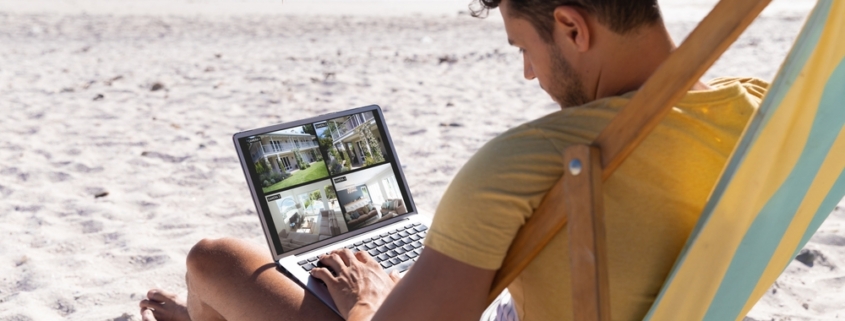Home Security (Vacation Mode) Best Practices
Home security is essential for protecting your family and possessions. Implementing simple, everyday practices can significantly enhance your home’s safety. When you’re on vacation, the last thing you want to worry about is the security of your home. Implementing a few key practices can help ensure your property remains safe while you’re away. Here are the best practices for putting your home in “Vacation Mode.”
1. Use Timers for Lights Set timers for indoor and outdoor lights to create the illusion that someone is home. Choose random patterns to mimic normal activity and deter potential intruders.
2. Secure All Entry Points Double-check that all doors and windows are securely locked. Use deadbolts and consider installing additional security bars or dowels in sliding doors and windows.
3. Hold Mail and Deliveries A full mailbox or packages left on the doorstep are clear signs that no one is home. Put a hold on your mail and ask a neighbor to collect any deliveries while you’re away.
4. Inform a Trusted Neighbor Let a trusted neighbor know you’ll be away and ask them to keep an eye on your property. Provide them with a key and your contact information in case of emergencies.
5. Adjust Your Security System Ensure your security system is armed and functioning properly. Update contact information and settings, and consider enabling any vacation-specific features your system offers.
6. Avoid Social Media Announcements While it’s tempting to share your vacation plans on social media, it’s best to wait until you return to post about your trip. Public announcements can inadvertently alert potential burglars.
7. Use Security Cameras Install security cameras around your property and ensure they’re working correctly. Many modern cameras offer remote monitoring, so you can check on your home from anywhere.
Everyday Best Practices
1. Lock Doors and Windows
Always lock your doors and windows, even when you’re at home. Invest in quality locks and consider installing deadbolts for added security.
2. Use Security Cameras
Security cameras act as a deterrent to potential intruders. Place cameras at entry points and ensure they’re visible. Modern cameras can be monitored via smartphone, providing real-time alerts.
3. Install Outdoor Lighting
Illuminate your home’s exterior with motion-sensor lights. This reduces hiding spots for intruders and increases visibility at night.
4. Maintain Your Yard
Keep bushes and trees trimmed to eliminate hiding spots. A well-maintained yard also signals that someone is home.
5. Secure Your Wi-Fi Network
Protect your home network with a strong password and encryption. This prevents hackers from accessing your personal information.
6. Get a Free Security Estimate
Consider professional security services for comprehensive protection. Bee-Safe offers a Free Security Estimate to assess your home’s security needs. Contact us today to learn more.
By incorporating these practices into your daily routine, you can create a safer environment for your family. Stay vigilant and proactive to ensure your home remains secure.



